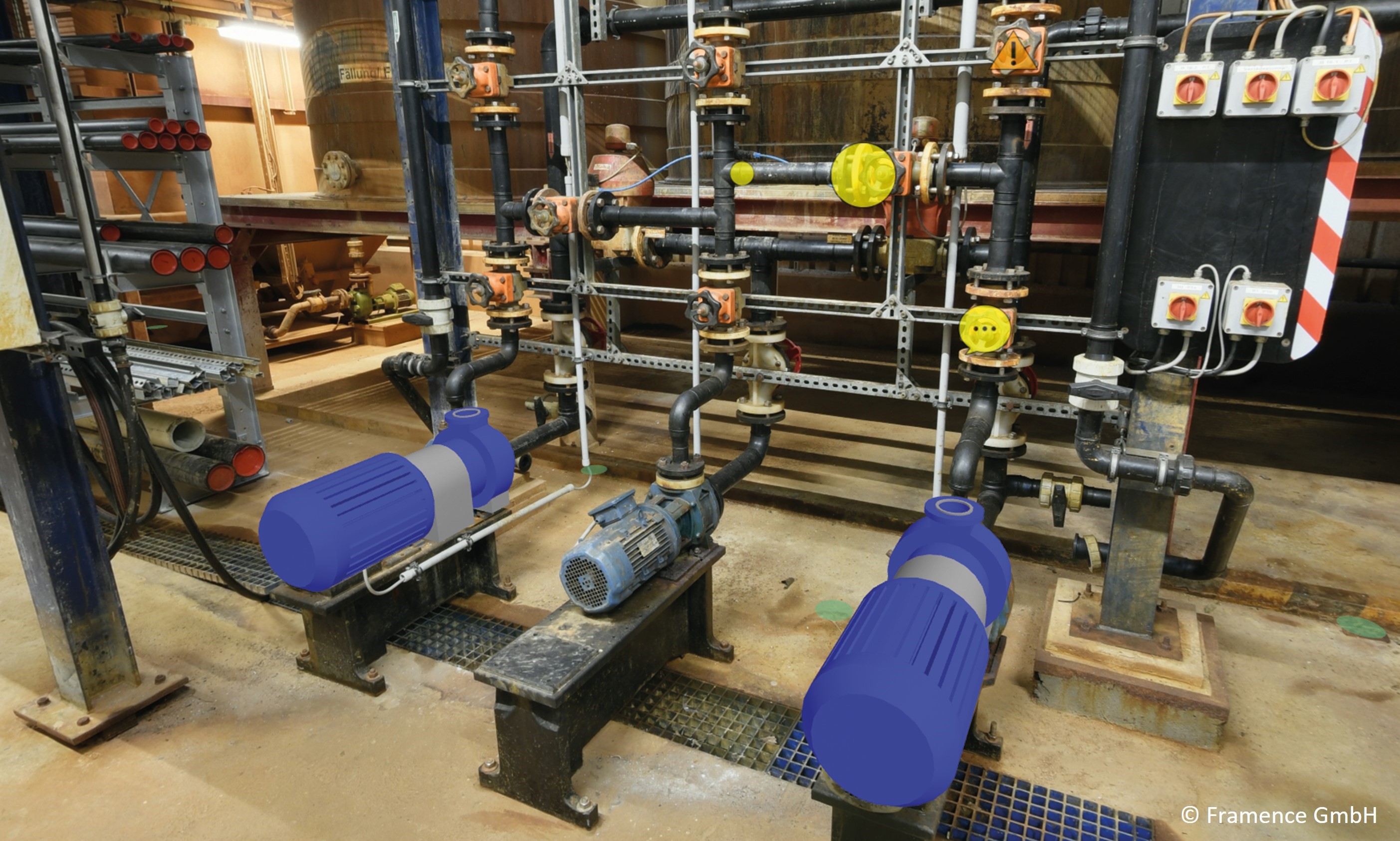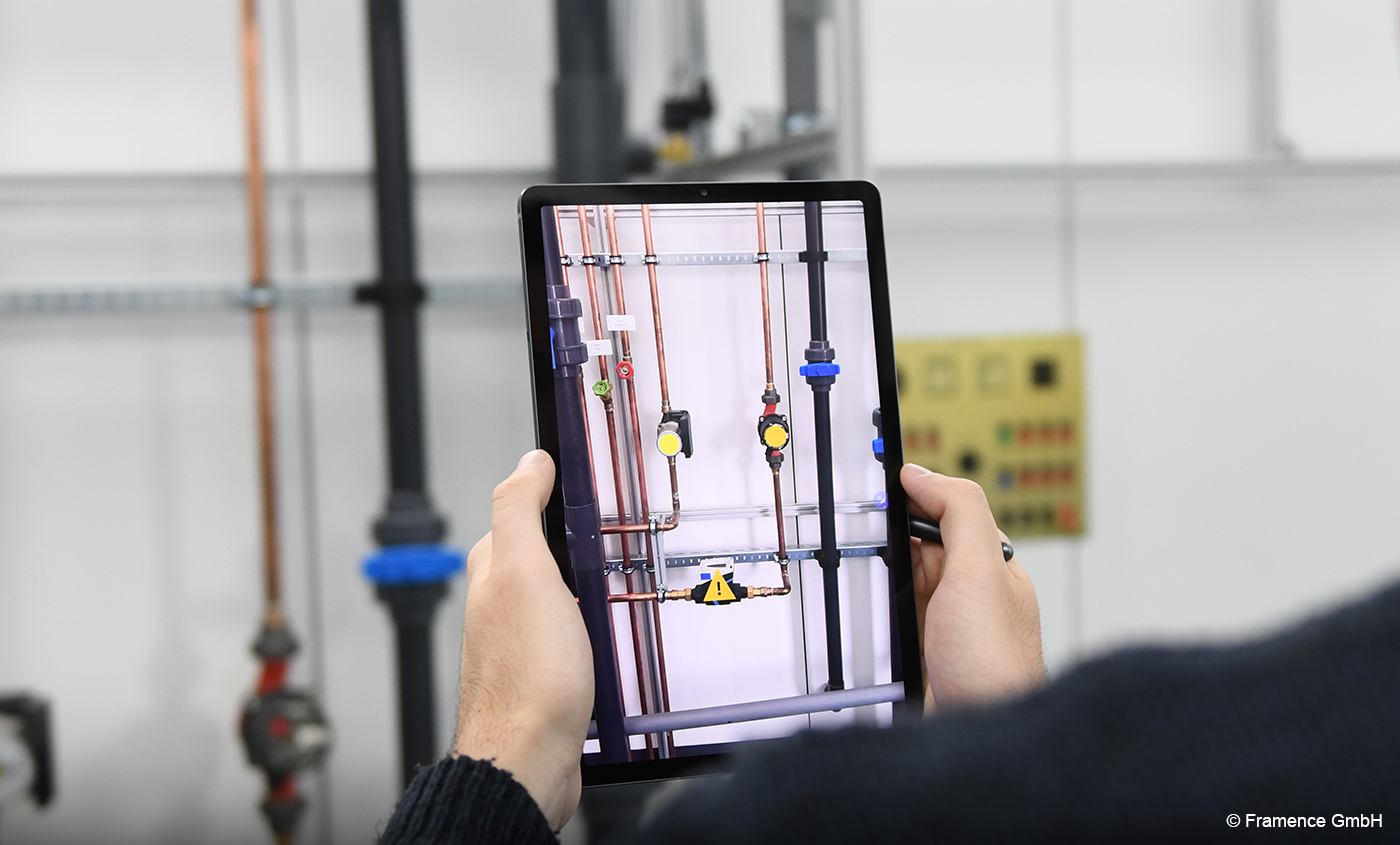Joint Research Project "iDZ-2025"
We are delighted that our KMU-innovativ research proposal has been approved by DLR and BMBF, and we look forward to collaborating with our project partner, Innomatik AG / Framenece GmbH. Below is our concise overview of our project, translated into English:
iDZ-2025
Digitalization in Building and Facility Operations:
Interactive Photorealistic Digital Twins


Image source: innomatik.com / framence.com
Motivation
The advancing digitalization and automation of economic and industrial processes, as well as the virtualization of workspaces, continuously contribute to fundamental changes in the business world. As a subaspect of the "Industry 4.0 movement," digital twins, in particular, offer the opportunity to access application-relevant information integrated into a common context at any time. Especially in the construction industry and building as well as facility operations, it is essential to have not only a precise but also a visually corresponding and comprehensive representation of physical reality: Only through this can interactive use cases, such as examinations of construction reality based on planning models, inventory documentation, maintenance/repairs, retrofits, or safety inspections, be virtually represented in an appropriate quality and effectiveness.
Objectives and Approach
Within the scope of this collaborative project, new technological methods in the field of image-based computer graphics and computer vision will be explored and developed for the generation and visualization of photorealistic interactive digital twins. The main objective of the project – creating photorealistic "spacious" and "XR-compatible" digital twins – cannot be efficiently scaled with currently available methods such as 3D laser scanning or 3D reconstruction in terms of time and cost. To realize interactive and freely navigable virtual environments, a novel geometry-free image synthesis method will be researched and implemented. The pursued approach encompasses the following core tasks: (a) Efficient generation of digital twins based on a visually supported photo/video capture method using standard mobile camera systems, and (b) Precise and visually consistent real-time rendering of large photo and video-based 3D areas, meeting the efficiency requirements for interactive Augmented and Virtual Reality applications.
Innovations and Outlook
After the project is completed, the prototypically implemented functionalities will be further developed to achieve product maturity, integrated into the Framence software platform, and made available to customers. The application scenarios relevant to entrepreneurial practices are intended to be elevated to a new level of quality through the implementation of the aforementioned new functionalities. This aims not only to save time and costs on the user side but also to unlock new application potentials through increased realism, information density, and more flexible interaction possibilities. From a scientific perspective, the newly developed methods at Nuremberg Institute of Technology are intended to be primarily disseminated through national and international conference visits related to interactive computer graphics and computer vision. The planned research and development activities also contribute to strengthening and expanding the scientific work at Nuremberg Institute of Technology, facilitating the transfer of new knowledge into teaching, particularly in the field of Visual Computing (with a focus on the master's programs in Media Informatics and Computer Science within the Faculty of Computer Sciene).
Project informations
Name: Frank Rust
E-Mail: f.rust [at] innomatik.com
Prof. Dr. Bartosz von Rymon Lipinski
E-Mail: bartosz.vonrymonlipinski [at] th-nuernberg.de
01.04.2023 until 31.03.2026
